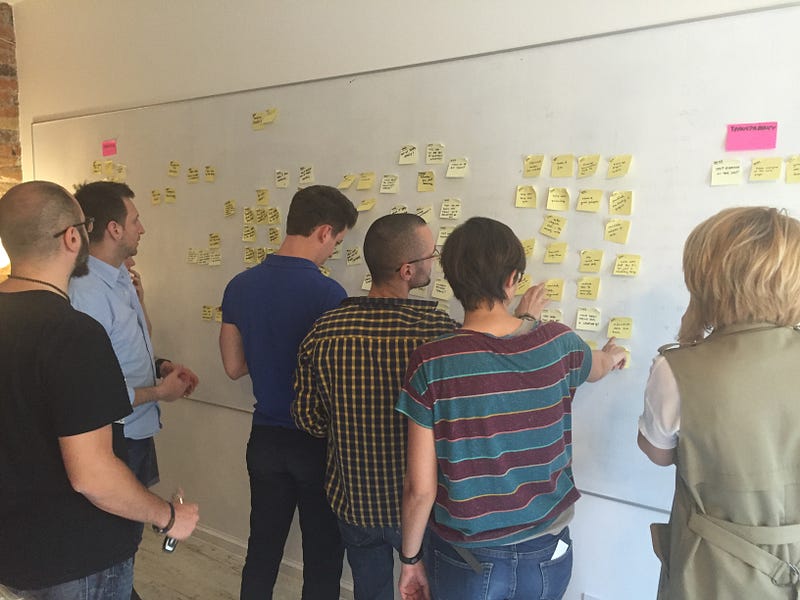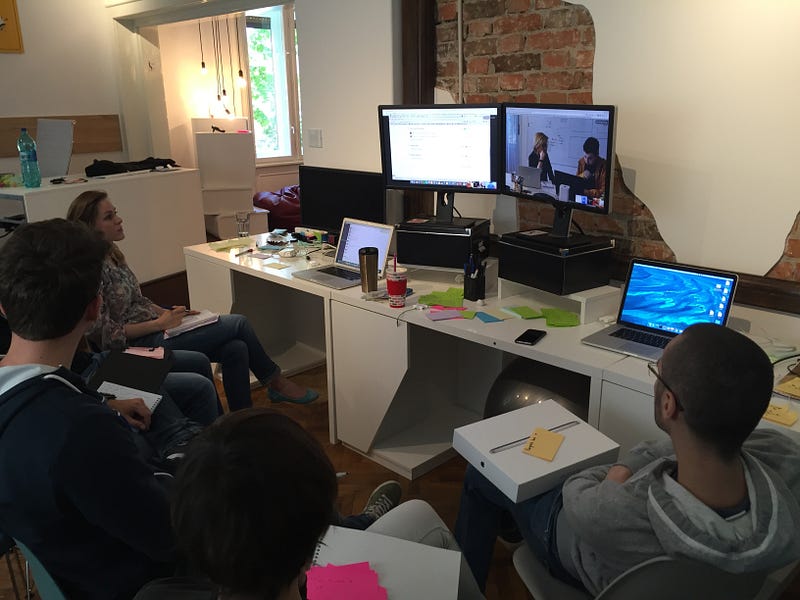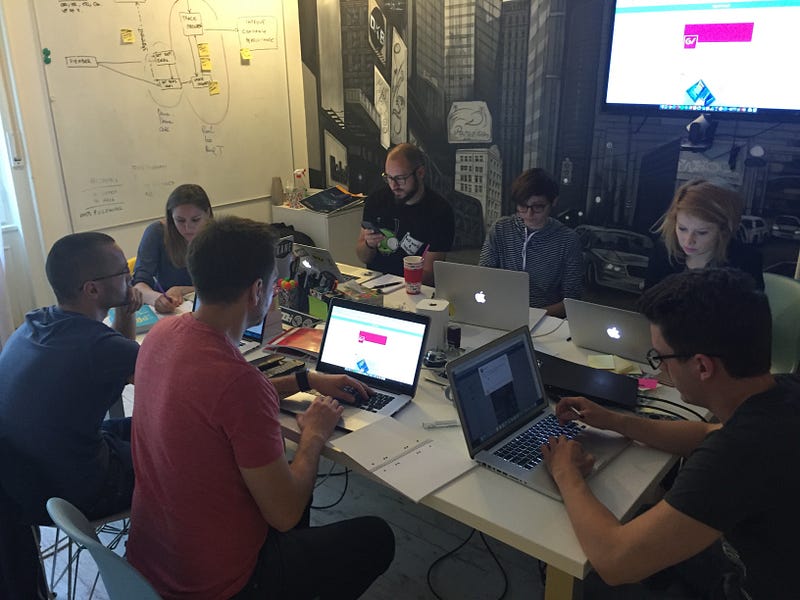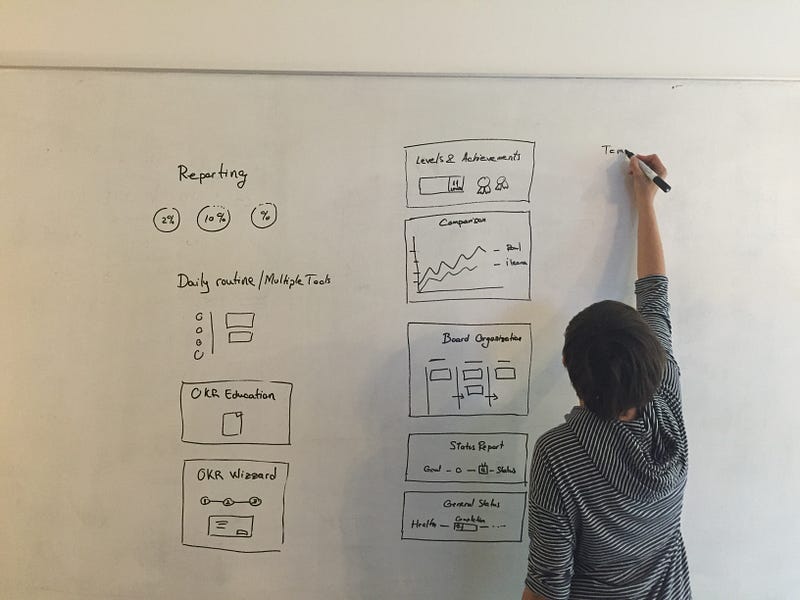Launch better products in 5 days: Part 4 of 4
In the previous 3 articles of this series we summarized the basics of a design sprint, let you peer inside a sprint in action at New Haircut and organized your plan for engaging and coordinating your sprint team.
In this article we’re going to share our experiences, good and bad, that we’ve encountered while preparing for and leading design sprints. We’re hoping it helps prepare you for your upcoming sprint.

Q: Do sprints need to be 5 full days?
A: At New Haircut, we’ve conducted a whole bunch of sprints now for companies ranging from 2-person startups global organizations with 250,ooo+ employees.
We’ve learned a ton and refined countless times. There have been instances where we’ve tried to cut corners or where we were asked to pack more in that feasible. That said, we’ve softened on the concept that every design sprint needs to be 5 full days. We’ve actually found that Tuesday and Wednesday can typically be compressed into a single day.
However, there’s also a temptation for some of the team to skip days, stroll in hours late, or duck out early. On prototyping day, if you have a few people that can manage to pull the prototype + interview script together, it’s acceptable for the others to be on-call but not necessarily in the sprint room. However, we recommend everyone to be fully committed for rest of the week.
Here’s why:
Scenario #1
Say one team member arrives several hours late for one of the days. Two things tend to happen: (1) The team loses ~1 hour reviewing what they’ve accomplished for the day — big momentum killer. (2) Because that missing person wasn’t part of the discussion, they wind up challenging topics with arguments the team already has clarity on.
Scenario #2
One common request we field is during day #5 — people turns to us and say “You guys have got this. We’re gonna go catch up on work and then we can sync later. Cool?” Actually, not cool.
There are three big downfalls: (1) If and when your customers push back on your prototypes, those that skip out on the interviews tend to resist and/or over-challenge that feedback. (2) Instead of being able to wrap up the final interview and move straight into recap and next steps, one or more of the team will need to summarize everything in a report or presentation and schedule time the following week to review. (3) Because that review will happen after the weekend, not only will the focus of the sprint become interrupted, but the team will likely need to rehash topics that were fresh last week.

Q: Is one sprint enough?
A: One of the most popular questions we hear is, “What happens if our prototype doesn’t get the reactions we were hoping for?” This is actually very normal and, at times, the outcome you‘re looking for. Let me explain.
Sometimes you get together on day #1 and everyone in the room agrees that this is the challenge to attack. But then you build your prototype and put it in front of customers and they point you in a different direction. The good news here is that you were able to spot this mis-step within 5 days. What would have happened if you realized it after 5 weeks? After 5 months?
You don’t know what you don’t know. But that’s the spirit of keeping this process contained within 5ish days. Regardless, you’re going to walk away from each sprint knowing oodles more about your customers and market than you did before — even if you test the wrong thing.
Remember the famous Thomas Edison quote about his failures while inventing the light bulb…
“I have not failed. I’ve just found 10,000 ways that won’t work.”
And so, what happens if you invalidate / partially invalidate? You run another sprint. Again, chances are you’ll be able to to move faster this time around; e.g. cutting out day #1. You may only need a few hours on day #2 if the challenge you picked was right but the solution was a shade off. The logistics of your next sprint will firm up once you complete the analysis of your customer interviews.
Q: Do we really need to completely clear our calendars?
A: Let me start by saying that if someone on your team doesn’t freak out about clearing their calendar for 5 days and/or not being allowed to bring their phones and laptops into the sprint room, it will be a first.
Everyone is busy. Everyone experiences some degree of terror by not being able to check their email every 4 minutes.
If you select a challenge to work on that no one in the company will spend 4–5 days on, that’s a great indication that it’s not a big enough challenge, or one that’s not aligned with company priorities. Choose a new challenge and try again.
If you run a proper design sprint, you will not have time during the sprint to focus on anything else. It’s an extremely intense, collaborative process.
And consider that it takes the average human 20 minutes to regain their full attention after even the slightest interruption. If someone is so selfish as to thwart the group by checking email, you are costing your company 20 minutes x 7.

Remember, it’s recommended that everyone be allowed to catch up on all administrative tasks from 8–9AM every day. But 9–5 are sprint lockdown hours.
So, block out your calendar for 5 days. You will live. And your inbox will be there waiting for you next week.
Q: Should you speak with customers prior to the sprint?
100%.
The goal of a design sprint is to validate solutions. However, prior to thinking about solutions, you should spend time to:
Align problems you want to work on with your company’s priorities
Research those problems: talk to customers, find out about existing solutions
Put your sprint participants together: team, experts, customers
For more on this very important topic, read What happens before a design sprint?
Q: Do we need 7 people to run a sprint?
A: Not necessarily. We talked about the core roles we recommend in the previous article in this series. However, what’s more important is that you have clearly defined roles.
One often overlooked role is the person in charge of organizing the sprint and keeping the wheels in motion, aka the Facilitator.
We’ve tried and failed to facilitate by committee. Likewise, having 1 person facilitate part-time, while managing another sprint job, didn’t work either. Facilitating is a full-time role.
And so the question that naturally follows is, “Should we bring in outsiders to fill in the gaps on our team?” Yes and no.
Your team will be best equipped to provide context related to the problem you’re tackling. That means the decider, sales, financial, marketing, and customer service roles are best kept in-house.
However the facilitator, design, and engineering roles can either come from inside or outside, as the sprint will often be the first time these folks are learning about the sprint challenge.
We recommend 2 options when going outside:
Contracting a firm that can provide a facilitator + designer + engineer — versus 2–3 individuals
Bonus: Even better if you can get the help from a team that comes equipped with design sprint best practices.
Q: Since this is just a prototype, do we need a designer?
A: I’m going answer this by quoting Braden Kowitz of Google Ventures.
Sometimes companies don’t have designers on their team, so we can step in to help out during a sprint. The only potential downside to augmenting a sprint team is that sometimes the core team won’t have the skills to continue the project after the sprint.
Companies are often hesitant to hire designers early. They ask: Do we need a designer at this stage? What would that designer do? Can we just hire a freelancer for a day to mock up some of our sketches?
But after working with designers during a sprint, companies often have a much better understanding of how design can impact their company.

Q: What if we’re having trouble finding customers to interview?
A: There was one sprint we facilitated where the target demographic user was a middle-aged, married woman in Dubai. Local laws prohibited men in our company from contacting them without their husbands’ consent. So we recruited the help of local, un-married women to contact these women and get their husbands’ consent ahead of time.
I’m guessing your customers are not that inaccessible. Remember, you only need (at least) 5 customers. And when desperate measures call, offer them a $100 gift card for their time.
Rely on your team’s network. If you’re tackling a problem that’s germane to your company priorities, you should already be at least somewhat entrenched with these communities.
Q: What if my team isn’t willing to commit to a sprint?
We previously covered the topic of getting your team committed and ready-to-go.
However, a popular and related set of quotes we hear from organizations is “We already did that.” Or “We paid a company to write an RFP. We’re not going to start over.” Or “We’ve been doing this for 4,000 years. We know how our customers think.”
These are often companies operating from a place of fear, that inhibit new innovations. Fear of uncertainty. Fear or losing time. Fear of doing something differently.
Remember, if we’re not growing, we’re dying. If this is a big challenge with a big opportunity, 1 week should be a no brainer.
Have some additional questions you’d like us to answer? Leave them in the comments.


